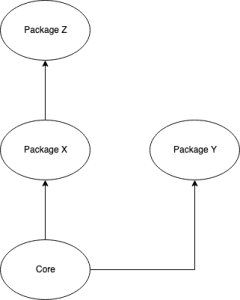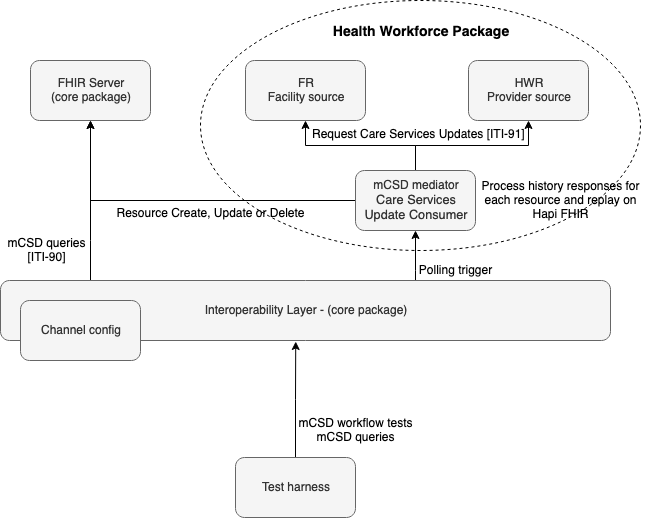Exchanging health information is difficult. Security and privacy are paramount. There are many potential components and use cases. Many implementers need or start with HIEs for one project or a narrow national use case, then face the challenge of scaling up and out into new areas.
The Instant OpenHIE project aims to reduce the costs and skills required for software developers to deploy an OpenHIE architecture for quicker initial solution testing and as a starting point for faster production implementation and customization. Instant OpenHIE will be a simple way for technical persons to install and see a complex system working against a real-world use case. It will allow technical persons to illustrate how interoperability can work to solve health challenges and show how a national interoperability architecture could be created with open-source software and standards.
Partnerships especially with regard to security, privacy, and standards-testing are critical, including future coordination with IHE and other entities to ensure alignment and to follow best practices of the leading institutions and prevent duplication.
Vision
At maturity, Instant OpenHIE activities will provide portable, launchable versions of multiple OpenHIE components to facilitate:
- Demonstrable reference products -- those that align with the OpenHIE Community's vision for low resource contexts
- Rapid software development of mediators and point-of-service systems by making it possible to launch several applications easily so the developer can focus on their task
- Reproducible, version-controlled infrastructure for user-contributed tests of the OpenHIE Architecture profiles, workflows, and use cases.
- Production-ready containers and orchestratable components that are deployable in any context.
The first phase of activities addresses items 1-2 while production-ready deployments and infrastructure for testing will be built incrementally upon the innovations and lessons learnt from the efforts of the earlier phase.
Deploying and managing private health information on patients and providers is among the most sensitive of any data. It is critical to ensure security and privacy, backups and data recovery, authentication, authorization and other enterprise standards. At maturity, Instant OpenHIE would provide production-ready containers and some orchestration assets, such as Kubernetes manifests, but these would be borrowed from Instant OpenHIE and still managed by implementers, who are responsible for databases, upgrades, privacy, security, backups and recovery, authentication, authorization, and other production-ready concerns. Instant OpenHIE would be a way for implementers to develop their tooling around the OpenHIE Architecture and the versions of it, rather than as a substitute for enterprise HIS implementation, support and management.
Roadmap
At maturity, Instant OpenHIE activities will provide portable, launchable versions of multiple OpenHIE components to facilitate:
- Demonstrable reference products -- those that align with the OpenHIE Community's vision for low resource contexts
- Rapid software development of mediators and point-of-service systems by making it possible to launch several applications easily so the developer can focus on their task
- Reproducible, version-controlled infrastructure for user-contributed tests of the OpenHIE Architecture profiles, workflows, and use cases.
- Production-ready containers and orchestratable components that are deployable in any context.
The first phase of activities addresses items 1-2 with a focus on a particular use case and set of packages, while production-ready deployments and infrastructure for testing will be built incrementally upon the innovations and lessons learnt from the efforts of the earlier phase.
The first phase focuses on:
- Consultations with the relevant communities on profiles, use cases, and workflows, including with the OpenHIE Architecture Community and DevOps Community.
- Capturing the community feedback into an Instant OpenHIE Technical Design document for sharing. The Technical Design document is the entry point for understanding how to get started and make use of the stack as well as contribute to it and its future.
- The initial efforts at creating a core prototypical health information exchange using open standards and open source software to help developers add interoperability to your own products.
- Two packages will be produced in the first phase, the core package and the health workforce package that extends from core and adds health workforce related functions and metadata.
Architecture
The fundamental concept of Instant OpenHIE is that it can be extended to support additional use cases and workflows. This will be achieved through packages. A core package will be produced in this first phase which other packages will all derive from. A package will either extend directly from the core package or from another package.
Each package will contain the following sorts of technical artefacts:
- Docker compose scripts for setting up the applications required for this package’s use cases and workflows
- Kubernetes scripts for setting up the applications required for this package’s use cases and workflows
- Configuration scripts to setup required configuration metadata
- Extensions to the test harness to test the added use cases with test data
The diagram below shows how packages will extend off each other to add use cases of increasing complexity:
The following diagram shows a generic logical architecture showing the involved OpenHIE components for the first phase, covering the core and health workforce packages. Each of these components’ roles could be played by any application that supports the necessary OpenHIE workflows and component requirements. It would be possible to swap out applications for others as long as they conform to these specifications. In the future Instant OpenHIE could support multiple application options for each role.
For more details on the Instant OpenHIE architecture, see Instant OpenHIE Technical Architecture.
Project Team
Digital Square
Jembi Health Systems
IntraHealth International
Engaging with Us
Please join us in the OpenHIE DevOps Community https://groups.google.com/forum/#!forum/ohie-devops
or, in the OpenHIE Architecture Community https://groups.google.com/forum/#!forum/ohie-architecture

